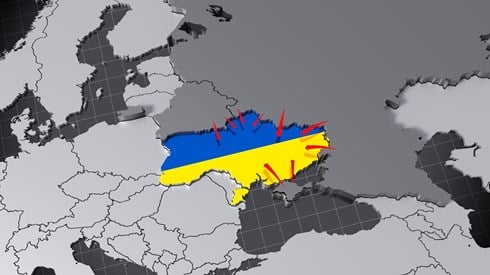Intermediaries Describe Challenging January Reinsurance Renewals

January 04, 2023

January 1 reinsurance renewals have been described as challenging, and in some cases frustrating, in analyses provided by two intermediaries.
Guy Carpenter describes January renewals as "one of the most challenging reinsurance markets the sector has experienced, as reinsurers and cedents work to establish a new market equilibrium."
Meanwhile, Gallagher Re suggests the reinsurance market faced a very late, complex, and often frustrating renewal. "As anticipated before negotiations commenced, the two areas of most constraint were peak-zone US property catastrophe capacity and coverage for strikes, riots and civil commotion, and war," says Gallagher Re in 1st View: Market Turns (January 2023).
In most other lines and regions, reinsurance buyers were generally able to secure desired capacity, though at higher costs and often with changed structures with increased attachment points and a higher floor for minimum rates on line, Gallagher Re's report suggests.
"The renewal process has been grueling for participants, many of whom have not faced such a rapid change in market conditions across a single renewal season," Gallagher Re says.
Guy Carpenter similarly notes an extremely late renewal season, though with reinsurance placements largely completed at client issued structures and pricing, without many of the requested modifications in coverage.
"Reinsurers presented fractured views at the outset, with more extreme coverage modifications threatening to erode the core value of the reinsurance product," Guy Carpenter says. "However, progress has been made finding paths to completion and many non-concurrent coverage issues have been resolved. There is still work to complete; this is not yet a settled market."
Guy Carpenter cites several key developments in the property reinsurance market at January 1 renewals. Property was the most challenged sector at the renewals, the intermediary says, with market adjustments focused on pricing, attachment, and coverage. "Ultimately, coverage changes that presented the most extreme erosion of value were not widely taken up and market-wide adjustments were largely limited to terror and strike, riot, and civil commotion (SRCC) clauses," Guy Carpenter says.
An imbalance between supply and demand for property catastrophe reinsurance resulted in a stressed market, Guy Carpenter says, "and, in some cases, led to pricing and structural changes unsupported by technical considerations."
While agreeing that conditions warrant a market correction in the property catastrophe reinsurance market, not all renewal outcomes "were logical or sustainable," the intermediary says. "Average price adjustments and increased attachment point movements were substantial across the portfolio, worldwide."
While some reinsurers reduced or withdrew property capacity in 2022, others are viewing the current market inflection point as an opportunity to increase their participation, according to Guy Carpenter. "Future outcomes should stabilize as capacity deficiencies moderate," the intermediary says.
Gallagher Re suggests that as January renewals drew near, the reinsurance market became bifurcated. There was a divergence between reinsurers prepared to provide clear lead terms and capacity and others who waited for firm orders in an effort to adjust terms at the last minute, Gallagher Re says.
European property renewals were generally completed earlier than those for United States reinsurance buyers, according to Gallagher Re, though still much later than at previous renewals, sometimes by a month or two. In addition, property reinsurance renewals showed fewer signs of regional differentiation with reinsurers instead adopting a more uniform approach as they seek to improve returns globally on what has been an underperforming class of business, Gallagher Re says.
Meanwhile, the casualty treaty reinsurance market was seen as calmer and more rational than other areas of the reinsurance business, Gallagher Re says, with most buyers seeing renewal terms as "tough but fair.
"This final point perhaps best illustrates the challenge facing many clients," Gallagher Re says. "The primary liability market has seen improved trading conditions for insurers for the last 4 to 5 years and did not require a hardening reinsurance market to provoke its own 'turn.' Reinsurers, while wary of prior year development in some instances, saw the benefit of improved original pricing and consequently reinsurance pricing and capacity remained relatively constant."
Guy Carpenter notes that dedicated reinsurance capital contracted in 2022. There was limited new capital inflow into the market through the fall, the intermediary says, though capital did begin to move more freely into the market in December as the extent of the reinsurance market correction became clear.
Both intermediaries' reports suggest that while January reinsurance renewals were difficult, current market conditions are not unprecedented.
"Times of significant market change are always challenging to navigate but we have seen a significant difference how individual reinsurers have reacted despite a widespread stated ambition to grow premium volumes in what is being viewed as the best treaty underwriting terms and conditions for a generation," James Kent, global CEO of Gallagher Re, writes in his company's report.
"Some have reached the end of the renewal season with reputations enhanced, and frankly deservedly so. This was done by exercising a firm and transparent approach based on client selection, allied to a commitment to their own view of pricing adequacy," Mr. Kent writes.
"Looking past the renewal of January 2023, it's important to remember that we have been at crossroads before," Dean Klisura, president and CEO of Guy Carpenter, said in his company's analysis of January 1 reinsurance renewals.
"In prior reinsurance cycles, significant catastrophe loss events such as Hurricane Andrew, the attacks of September 11, 2001, and Hurricanes Katrina, Rita, and Wilma were the catalysts for market corrections that preceded new capital entering the sector," Mr. Klisura said. "It is imperative that the industry stay focused on providing workable client solutions, thorough coverage, and balanced pricing for the long-term sustainability of cedents and markets."
January 04, 2023










